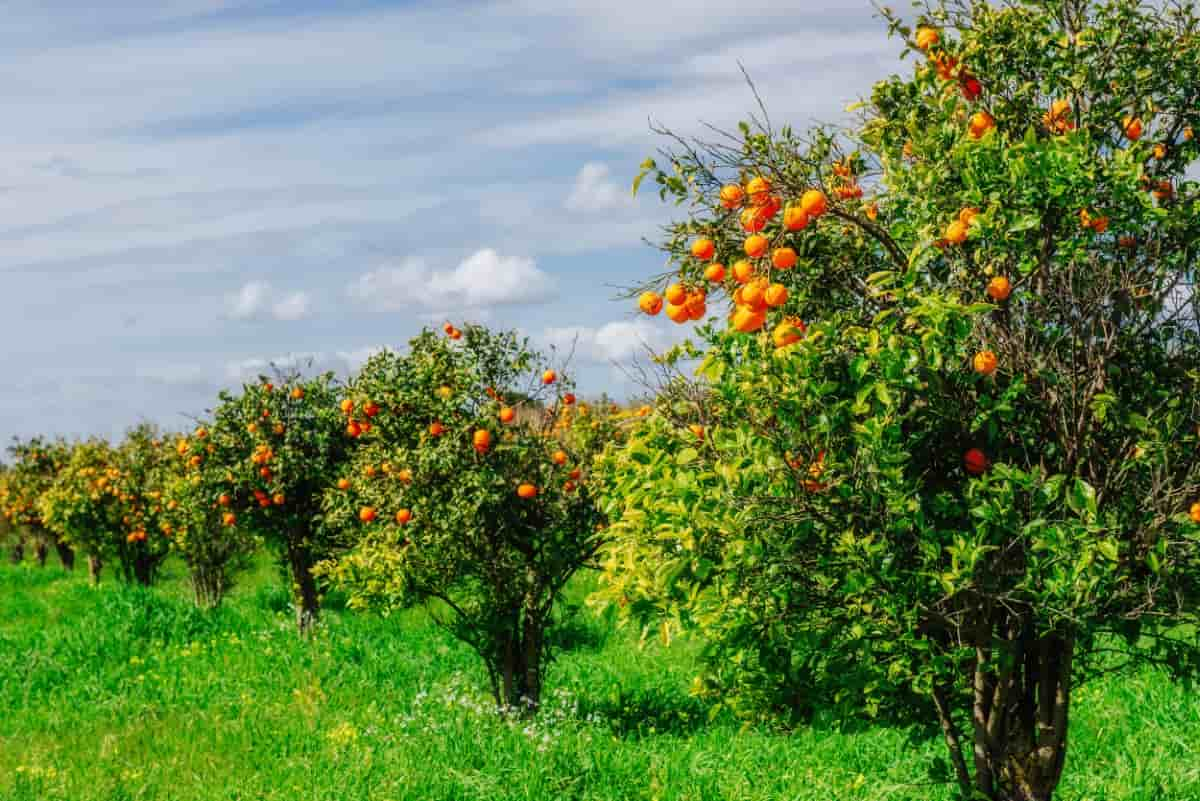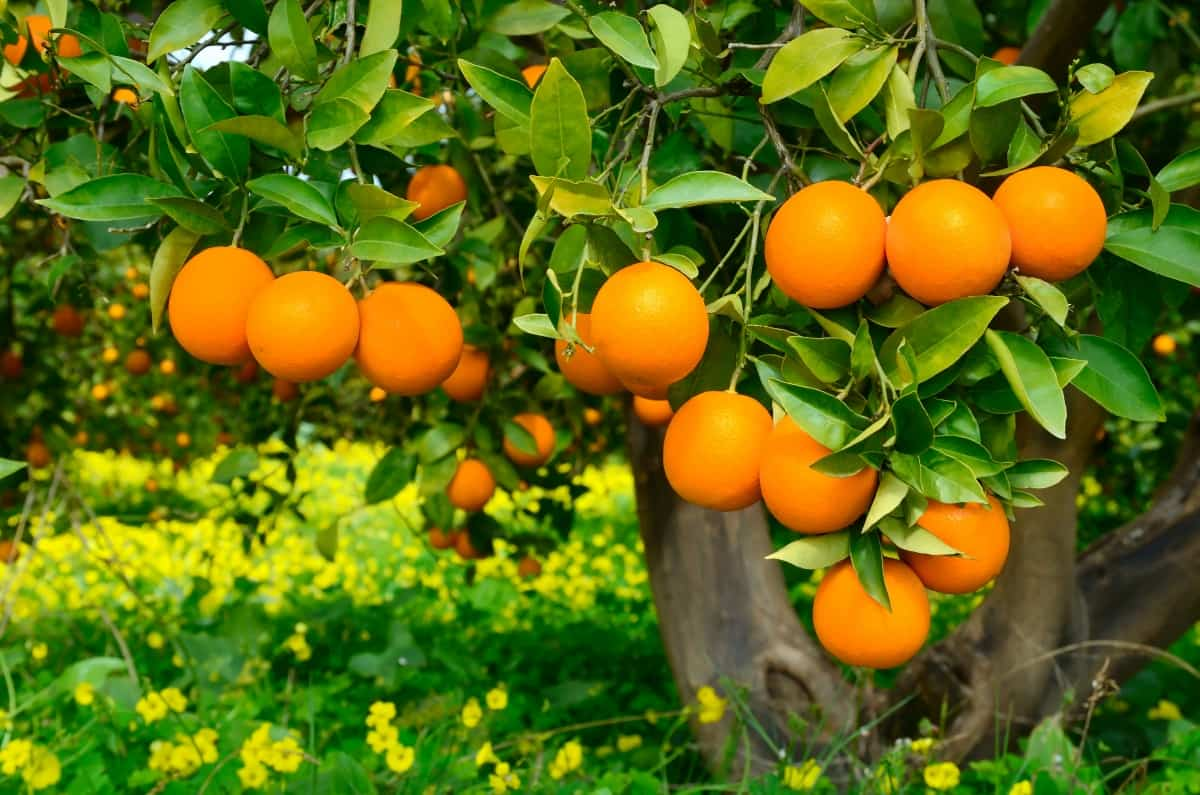Orange plants are a popular choice for both indoor and outdoor gardens, but they can be vulnerable to certain ailments that can cause them to die. Know the most common causes of dying orange plants and how to fix them to keep your orange plant healthy. Below are some common causes that cause the orange tree’s death and the steps to fix them.

9 Causes of Dying Orange Tree
Why is My Orange Tree Dying in Summer Heat, and How Can I Save It?
As summer temperatures rise, your orange tree may become increasingly vulnerable to various issues. Unfortunately, when left unchecked, these issues can lead to the death of your orange tree. With proper care, however, you can protect your orange tree from the summer heat and save it from certain death. The most common issue associated with high summer temperatures is dehydration and sunburn.
- You should water your tree regularly to saturate the soil around the roots to prevent dehydration.
- Mulch around the tree’s base, as this will keep the soil retain moisture and stay cool.
- To prevent sunburn, provide your orange tree with plenty of shade. Placing a tarp or canvas over the tree when temperatures are particularly high can also help protect it from the sun.
Preventing Orange Tree Death from Fungal Infections: Effective Remedies and Prevention Tips
Orange trees are susceptible to fungal infections that can quickly cause death if left untreated. Fortunately, several remedies and preventive measures can be taken to protect orange trees from these infections. Common signs of infection include discolored leaves, wilting, or a white, powdery substance on the tree’s bark.
- Ensure that the tree should be planted in a location with plenty of sunlight. Additionally, water the tree regularly and avoid overwatering.
- Once the infection has been identified, apply a fungicide to the infected area according to the instructions on the product label.
- In addition to applying a fungicide, pruning the infected branches and removing dead or dying branches can help prevent the infection from spreading.
- Maintain the area around the tree free of debris, such as fallen leaves or branches, as this can provide a breeding ground for fungi.
Identifying Nutrient Deficiencies in Orange Trees and Remedies to Revive Them
The common nutrient deficiencies in orange trees are nitrogen, phosphorus, and potassium. Yellowing leaves usually identify nitrogen deficiency, whereas phosphorus deficiency will cause the leaves to turn dark green and become stunted. Potassium deficiency will cause yellowing of the leaves, but the veins will remain green. Fortunately, nutrient deficiencies in orange trees can be easily remedied. If the soil test reveals low nitrogen, phosphorus, and potassium levels, applying fertilizer with the relevant nutrient will help restore the tree’s health.
In case you missed it: 9 Causes of Dying Banana Tree and How to Fix It?

Organic fertilizers, such as manure, are especially beneficial as they can also help improve the structure of the soil. In cases of severe nutrient deficiencies, foliar sprays may be necessary. Foliar sprays are a type of fertilizer sprayed directly onto the leaves and absorbed through the leaves. This is a more effective way of delivering nutrients to the tree, as nutrients are quickly absorbed directly into the plant tissues.
How to Protect Orange Trees from Pests and Diseases to Prevent Decline and Death
Protecting orange trees from pests and diseases is essential for preventing declines in their health and death. Here are the tips to help keep your orange trees healthy. Protecting orange trees from pests and diseases by checking the tree regularly for signs of problems. If you see any signs of potential pests or diseases, such as discolored leaves or spots on the fruit, you should take steps to eliminate the problem.
You can use insecticides or fungicides to help control pests and diseases, but make sure to use the right products for the right problem. Make sure to prune the orange tree regularly. Pruning can help keep the tree healthy, control pests and diseases, as well as helping to promote the growth of new fruit-bearing branches.
Overwatering Issues in Orange Trees: Signs, Symptoms, and Steps to Rescue a Dying Tree
When it comes to overwatering, it’s important to look for certain signs and symptoms. First, check the leaves for signs of wilting. Wilting leaves are a sign of overwatering. You may also find the leaves start to yellow and drop off. Additionally, the soil around the tree will be overly saturated and may contain a swampy smell.
To rescue it, check the soil for any waterlogging and adjust your watering schedule accordingly. Once the soil is dry, water your tree only when the top inch is dry. You should also ensure your tree is planted in well-draining soil with organically rich. This will help to give it the best chance of survival. Finally, apply a balanced fertilizer to help your tree grow again.
Underwatering Issues in Orange Trees: Signs, Symptoms, and Steps to Rescue a Dying Tree
Underwatering can be a serious issue for orange trees, but you can help rescue a dying tree with the right steps. The first sign of underwatering in an orange tree is wilting leaves. Leaves may appear curled, dry, and limp and turn yellow or brown. Orange tree bark can also become dry and scaly. Other signs of underwatering include small, yellowish-green fruit and small or bitter-tasting orange fruit.
If you suspect your orange tree is suffering from underwatering, the first step is to check the soil. Water it slowly and deeply to help the tree recover from dry soil. Adding mulch around the tree can also help it retain moisture and protect its roots from extreme temperatures. Another way is to set up a drip irrigation system, which will help ensure the tree gets the right amount of water consistently.
Orange Tree Winter Damage/dying: Protecting Trees from Frost and Cold Temperatures
Orange trees are extremely sensitive to cold temperatures and frost. Winter temperatures can cause serious damage to orange trees and even lead to death if not properly protected. Fortunately, the below steps can be taken to protect orange trees from frost and cold temperatures.
- Cover the orange trees with a blanket or tarp when temperatures dip below freezing. This is especially important for younger trees more vulnerable to cold damage.
- In addition to covering the tree, use mulch to insulate and protect the tree roots from the cold. A protective mulch layer can also help regulate soil temperatures and keep them from dropping too low.
- Thermal blankets can also be used to protect the tree against cold temperatures. Thermal blankets protect trees from frost and cold temperatures by trapping heat and preventing it from escaping.
Improper Pruning May Cause Orange Tree Death: Pruning Methods for Healthy Growth
Pruning is essential to caring for an orange tree, as it helps to promote healthy growth and ensure good fruit production. Unfortunately, if pruning is done incorrectly, it can lead to the tree’s death. Improper pruning can weaken the tree, making it more susceptible to disease and pests. It can also reduce the amount of fruit the tree produces. To prevent the death of an orange tree, use the correct pruning methods.
One of the most important pruning techniques is selective pruning, where only dead, diseased, or unproductive branches are removed. This technique ensures that the tree is healthy and strong. Topping is another practice of cutting the top off the tree to control the height. The topping should only be done in moderation, as it can damage the tree.
Reviving a Stressed Orange Tree: Rehabilitation Methods for Overall Recovery
These trees can become stressed due to various environmental factors, leading to a decrease in fruit production, yellowing leaves, and an overall decline in health. Fortunately, several methods can help restore a stressed orange tree to its former glory. Some common issues include too much water, insufficient sunlight, and pests or diseases. Once the cause is identified, the proper steps should be taken to address the issue.
In case you missed it: 9 Causes of Dying Guava Tree and How to Fix It?

Several other measures can be taken to help a stressed orange tree recover. Pruning the tree to reduce its size and allow more light can be beneficial. Applying fertilizer can help give the tree the nutrients it needs to stay healthy. Regularly removing dead or diseased branches and leaves can help reduce disease risk and encourage new growth.
Conclusion
By understanding the causes of a dying orange plant and how to fix them, you can help keep your orange plant healthy and happy. Make sure to water your plant properly, provide it with adequate sunlight, treat any insect infestations, and use fertilizer sparingly to keep your orange plant healthy and thriving.
- Feed Your Flock for Less: Top 10 Tips to Save on Chicken Feed
- Ultimate Guide to Ossabaw Island Hog: Breeding, Raising, Diet, and Care
- Hatching Answers: The Top 10 Reasons Your Chickens Aren’t Laying Eggs
- Eggs and Economics: Breaking Down the Cost of Raising Backyard Chickens
- Defend Your Greens: Proven Methods to Keep Iguanas Out of Your Garden
- Ultimate Guide to Cinnamon Queen Chicken: A Comprehensive Guide for Beginners
- Ultimate Guide to California Tan Chicken: Breeding, Raising, Diet, Egg-Production and Care
- Ultimate Guide to Marsh Daisy Chicken: Breeding, Raising, Diet, and Care
- 10 Types of Chicken Farming Businesses You Can Start for Profits